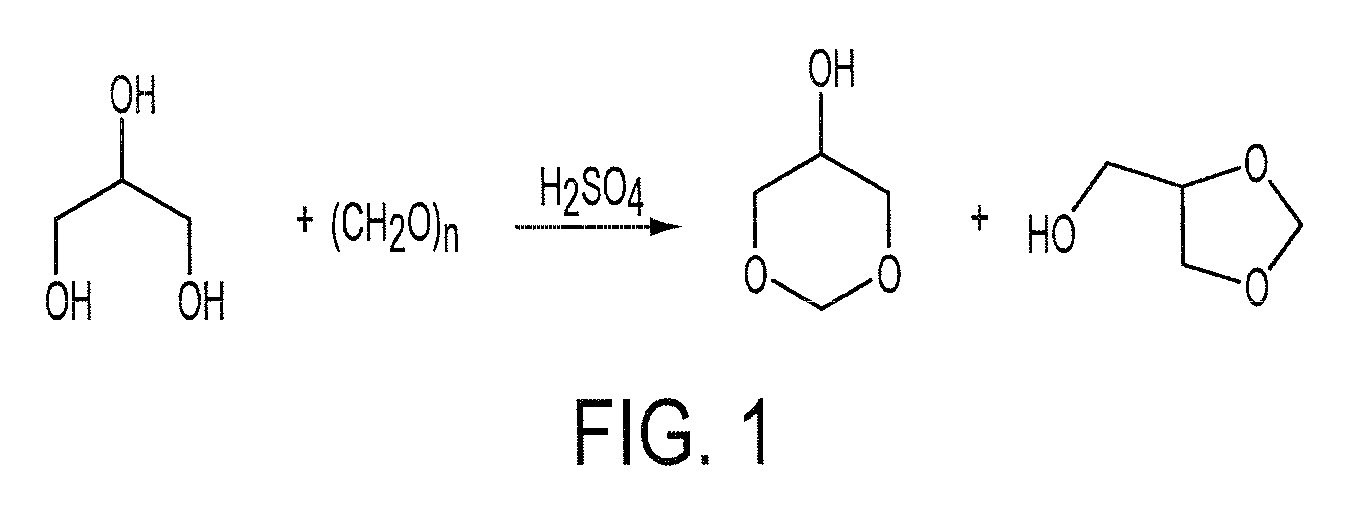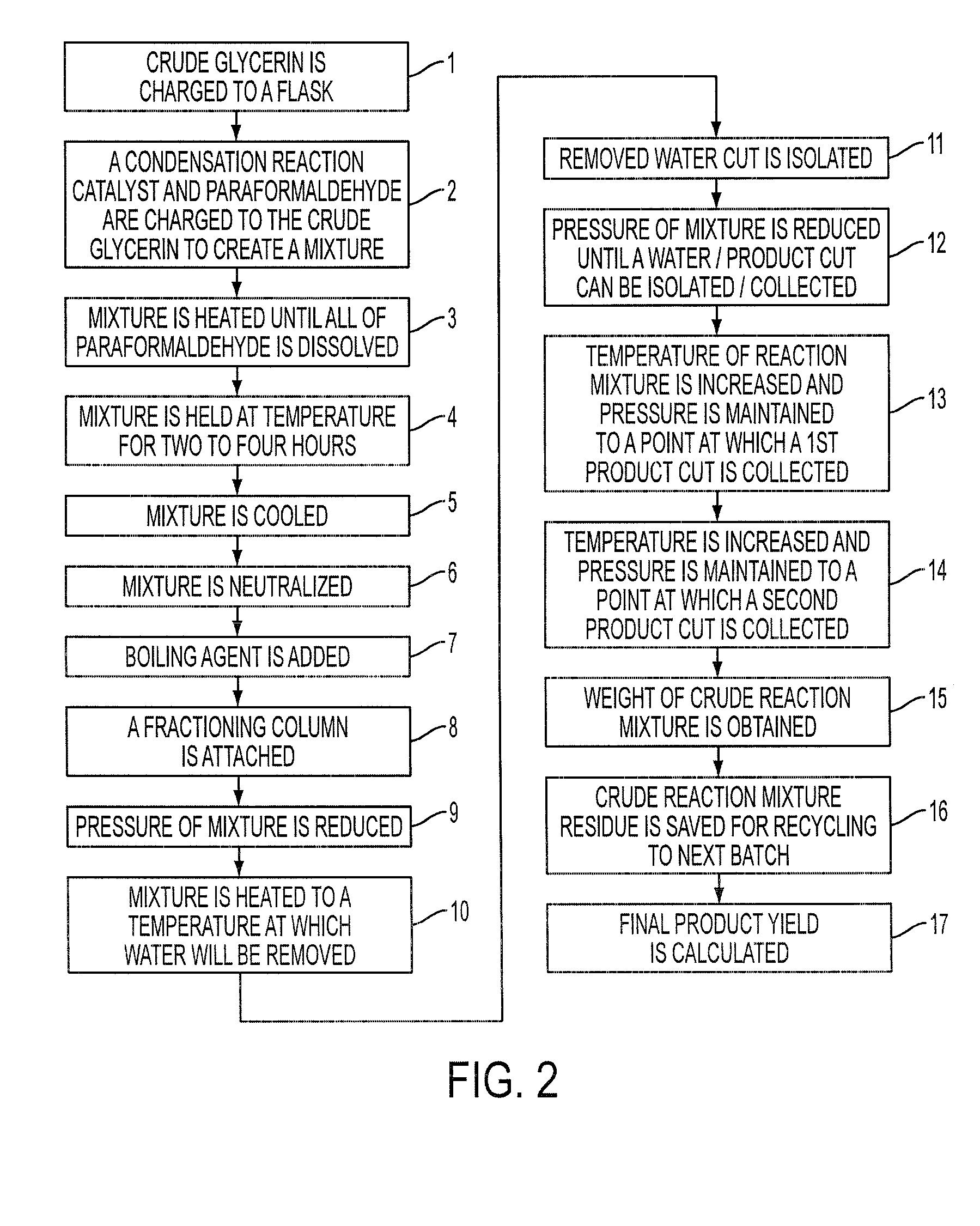Process for the Preparation of Glycerol Formal
a technology of glycerol and formal, which is applied in the field of processes for the creation of glycerol formal, can solve the problems of increasing the equipment cost adding to the cost and complexity of the production process, and making the process of the prior art difficult to manufactur
- Summary
- Abstract
- Description
- Claims
- Application Information
AI Technical Summary
Benefits of technology
Problems solved by technology
Method used
Image
Examples
example 1
[0065]To begin, in step (101), a flask is tared. In the embodiment of the process depicted in FIG. 3, the flask is a 500-gram flask.
[0066]Then, in step (102), the tared flask is charged with about 270.5 grams of crude glycerin.
[0067]Following the charging, in step (103), around 0.5-ml of PM 23 (sulfuric acid) is added to the flask.
[0068]Then, in step (104), about 60 grams paraformaldehyde is charged to the reaction flask (6).
[0069]After charging the 60 grams of paraformaldehyde, in step (105), the mixture is heated to about 100° C.
[0070]In step (106), the mixture is held at about 100° C. until generally all of the parafromaldehyde is dissolved. Step (106) also consists of recording the time required to reach this point (106) at which all of the parafromaldehyde is dissolved.
[0071]After recording the time, in step (107), a sample of the crude reaction mixture is taken and then submitted for gas-liquid chromotography analysis using the advance worksheet. In the embodiment of the proce...
example 2
[0093]To begin, in step (201), a flask is tared. In the embodiment of the process depicted in FIG. 3, the flask is a 500-gram flask.
[0094]Then, in step (202), the tared flask is charged with about 100 grams of distillate residue from the previous batch. Generally the typical assay of this distillate is around 75% glycerin.
[0095]Then, in step (203), a 500-ml flask is charged with 184 grams of crude glycerin. Generally the typical assay of this glycerin is around 85%.
[0096]Following the charging, in step (204), around 0.5-ml of PM 23 (sulfuric acid) is added to the flask.
[0097]Then, in step (205), about 60 grams paraformaldehyde is charged to the reaction flask.
[0098]After charging the 60 grams of paraformaldehyde, in step (206), the mixture is heated to about 100° C.
[0099]In step (207), the mixture is held at about 100° C. until generally all of the paraformaldehyde is dissolved. Step (207) also consists of recording the time required to reach this point (207) at which all of the par...
PUM
 Login to View More
Login to View More Abstract
Description
Claims
Application Information
 Login to View More
Login to View More - R&D
- Intellectual Property
- Life Sciences
- Materials
- Tech Scout
- Unparalleled Data Quality
- Higher Quality Content
- 60% Fewer Hallucinations
Browse by: Latest US Patents, China's latest patents, Technical Efficacy Thesaurus, Application Domain, Technology Topic, Popular Technical Reports.
© 2025 PatSnap. All rights reserved.Legal|Privacy policy|Modern Slavery Act Transparency Statement|Sitemap|About US| Contact US: help@patsnap.com



